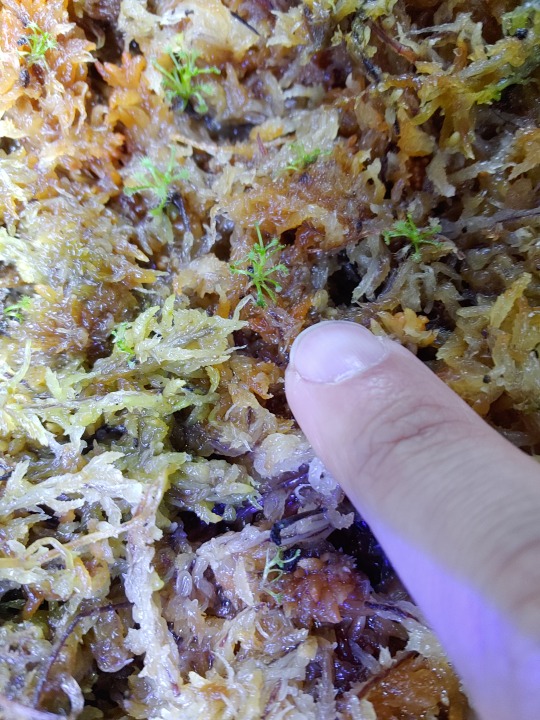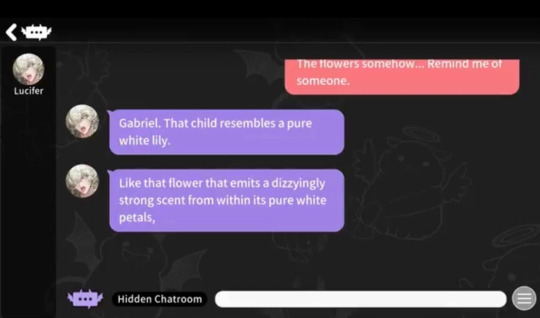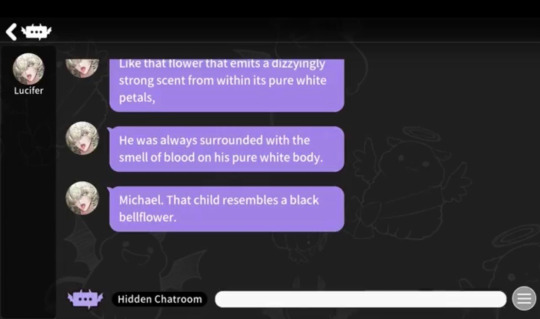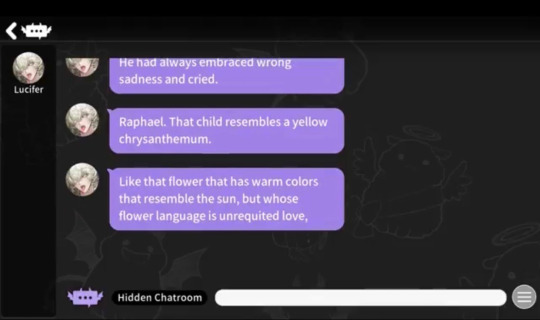#Air Purifier Growth
Explore tagged Tumblr posts
Text
A Comprehensive Overview of Europe Air Purifier Market Landscape
The Europe air purifier market size was estimated at USD 4.6 billion in 2023 and is expected to grow at a CAGR of 6.1% from 2024 to 2030. The market growth is attributed to the critical need for improved air quality in the region. According to the European Environment Agency, 253,000 deaths in Europe could have been avoided if the fine particulate matter (PM2.5) was under the World Health Organization’s recommended number. These figures, coupled with the substantial public health costs associated with air pollution, underscore the urgency for Europeans to seek solutions like air purifiers. Thus, driving the regional market expansion.
The market held a share of 28.7% of the global air purifier market revenue. Due to rising industrialization, urbanization, and number of automobiles, Europe has become one of the most polluted regions across the globe. The European Union initiated stringent rules to reduce the percentage of air pollutants, such as sulfur oxide, nitrogen oxide, volatile organic compounds, and ammonia. Various amendments were introduced to control air pollution in the region; however, the rate at which the pollution decreased is far less than what was desired.
Gather more insights about the market drivers, restrains and growth of the Europe Air Purifier Market
Key Europe Air Purifier Company Insights
The market is quite competitive due to the presence of international as well as local players. Companies offer a wide range of products to choose from, along with the flexibility of buying from both offline and online channels. This allows consumers to compare the products based on product performance, technology, and pricing. Companies are competing based on quality, pricing, and reputation.
Recent Developments
• In February 2023, Carrier launched a new air purifier system, which uses activated carbon along with UV to purify the air. It is a new add-up to their Healthy Homes lineup. The new purifier can remove odors, VOCs, and other common harmful indoor gases
Europe Air Purifier Market Report Segmentation
This report forecasts revenue growth at regional and country levels and provides an analysis of the latest trends in each of the sub-segments from 2018 to 2030. For this study, Grand View Research has segmented the Europe air purifier market report based on technology, coverage range, sales channel, application, and country:
Technology Outlook (Revenue, USD Million, 2018 - 2030)
• High Efficiency Particulate Air (HEPA)
• Activated Carbon
• Ionic Filters
• Electrostatic Precipitator
• Others
Coverage Range Outlook (Revenue, USD Million, 2018 - 2030)
• Below 250 Sq. Ft.
• 250-400 Sq. Ft.
• 401-700 Sq. Ft.
• Above 700 Sq. Ft.
Sales Channel Outlook (Revenue, USD Million, 2018 - 2030)
• Online
• Offline
o Hypermarkets/Supermarkets
o Retail Stores
o Specialty Stores
o Others
Application Outlook (Revenue, USD Million, 2018 - 2030)
• Commercial
o Retail Shops (Mercantile)
o Offices
o Healthcare Facilities
o Hospitality
o Schools & Educational Institutions
o Laboratories
o Transport (railway stations, metros, bus stops, airports)
o Others
• Residential
• Industrial
Country Outlook (Revenue, USD Million, 2018 - 2030)
• Germany
• France
• UK
Order a free sample PDF of the Europe Air Purifier Market Intelligence Study, published by Grand View Research.
#Europe Air Purifier Market#Europe Air Purifier Market Size#Europe Air Purifier Market Share#Europe Air Purifier Market Analysis#Europe Air Purifier Market Growth
0 notes
Text
Residential Air Purifiers Market is Dominated by Portable/Standalone Category
According to a statement by P&S Intelligence, the residential air purifiers market generated a value of USD 4,225 million in 2022, and it will advance at a 7.10% CAGR, to reach USD 7,313 million, by 2030.

The growth of the industry is ascribed to government regulations for air quality control and monitoring, growing concerns regarding the environmental and health problems of pollution, and the increasing attention of the public in smart homes. Moreover, the necessity for energy-efficient equipment and the constant R&D activities by the industry players to produce innovative products also boost the growth of the industry.
Additionally, the increasing incidence of airborne illnesses globally is also a main factor assisting the growth of the industry.
The governments have been forced to implement strict regulations for air quality checking and control due to the constant environmental degradation and the atmosphere contamination impact on public health. China, the U.S., India, France, Japan, Canada, and Germany have established several regulations and strategies to screen the air and constantly survey its quality in metropolitan regions.
In 2022, the high-efficiency particulate absorbing (HEPA) filter technology accounted for the largest residential air purifiers market share, at over 42%. This is because of the ability and high performance of this technology in trapping and removing airborne particles and improving the surrounding environment.
The activated carbon filters category will advance with a 7.7% CAGR in the years to come. Because of the larger carbon particle's surface area, the capacity of trapping odors, gases, and smoke rises.
In 2022, the residential air purifiers industry was dominated by the portable/standalone category, with a 67% share. Because of the user-friendliness and easy maintenance of these variants for homes, they are broadly adopted to improve indoor air quality.
In-duct purifiers will observe faster growth, with a rate of approximately 7.4%, in the years to come.
The APAC industry is expected to witness the fastest growth, of 7.9%, owing to the rapid urbanization in China and India, which is resulting in the increasing pollution level. Moreover, APAC is home to numerous industry players, which leads to the easy accessibility of these HVAC components.
Additionally, the North American residential air purifiers industry will observe a growth rate of approximately 7.3% in the years to come. This is credited to the growing case of respiratory disorders, the mounting level of pollution, and the increasing consciousness about the environmental and health implications of air pollution.
It is because of the government's indoor air quality control regulations and increasing consciousness of breathing clean air, the residential air purifiers industry will continue to grow in the years to come.
Source: P&S Intelligence
#Residential Air Purifiers Market Share#Residential Air Purifiers Market Size#Residential Air Purifiers Market Growth#Residential Air Purifiers Market Applications#Residential Air Purifiers Market Trends
1 note
·
View note
Text
Activated carbon filters are porous materials used to purify air and water by trapping and removing contaminants through adsorption. They consist of activated carbon particles with a high surface area, providing an effective means of removing impurities such as chemicals, gases, odors, and organic compounds.
The activated carbon filters market size is projected to grow from USD 267 million in 2020 to USD 330 million by 2025, at a CAGR of 4.4%. The activated carbon filters market has been gaining significance with its major application in water treatment and air purification; the duo being its major applications. Stringent government regulations implying directives for industrial water pollution and quality drinking water have led to fast growth and acceptance of activated carbon filter products. These regulations are being implemented in the regions of Europe and North America and also gaining importance in the APAC region. The policies and regulations implemented by different authorities for supporting the use of activated carbon filters are attributing to the growth of activated carbon filters market.
#Activated Carbon Filters Market#Activated Carbon Filters Price#Activated Carbon Filter Manufacturers#Stainless Steel Shell#Carbon Steel Shell#carbon filter air purifier#activated carbon water filter#activated charcoal filter#activated charcoal water filter#air purifier with activated carbon filter#filter activated#granular activated carbon filter#catalytic carbon filter#activated carbon filters#carbon water filter#water filter charcoal#carbon air filter#blueair 411 filter#Activated Carbon Filters Market Analysis#Activated Carbon Filters Market Size#Activated Carbon Filters Market Share#Activated Carbon Filters Market Trends#Activated Carbon Filters Market Growth#Activated Carbon Filters Market Research#Activated Carbon Filters Market Revenue#Activated Carbon Filters#Global Activated Carbon Filters market#Activated Carbon Filters Market Overview#Activated Carbon Filters Research Report#Activated Carbon Filters research insights
0 notes
Text
Air Purifier Market to See Sustainable Growth Ahead

Advance Market Analytics published a new research publication on "Air Purifier Market Insights, to 2028" with 232 pages and enriched with self-explained Tables and charts in presentable format. In the Study you will find new evolving Trends, Drivers, Restraints, Opportunities generated by targeting market associated stakeholders. The growth of the Air Purifier market was mainly driven by the increasing R&D spending across the world.
Get Free Exclusive PDF Sample Copy of This Research @ https://www.advancemarketanalytics.com/sample-report/68755-global-air-purifier-market-1 The Air Purifier Market report covers extensive analysis of the key market players, along with their business overview, expansion plans, and strategies. The key players studied in the report include: Camfil (Sweden), Coway Co. Ltd. (South Korea), Honeywell International Inc. (United States), IQAir (Switzerland), Americair Corporation (Canada), Koninklijke Philips N.V. (Netherlands), Dyson Technology Limited (United Kingdom), Newell Brands Inc. (United States), Sharp Corporation (Japan), Bluestar Ltd. (India), Daikin Industries Ltd. (Japan), Unilever PLC (United Kingdom), Panasonic (Japan), Mann Hummel GmbH (Germany), Whirlpool Corporation (United States). Definition: The air purifier is a device which removes impurities from the air in a room. Air purifiers Improve indoor Climate of the room and protect the health of patients with allergy, respiratory ailments, and asthmatic condition. It also helps in reducing second-hand tobacco smoke by eliminating Volatile Organic Compounds and smoke particles from the air. Massive industrialization and technological developments for developing environment-friendly air purifier in order to reduce ozone emission expected to drive the air purifier market over the forecasted period. The following fragment talks about the Air Purifier market types, applications, End-Users, Deployment model etc. A thorough analysis of Air Purifier Market Segmentation: by Type (High-Efficiency Particulate Air (HEAP) Filters, Minimum Efficiency Reporting Value (MERV) Filters, Others), Application (Residential, Commercial, Other), End-Use Industry (Industrial, Commercial, Residential, Medical), Technique (Photo plasma technology, Thermodynamic sterilization (TSS), Ultraviolet germicidal irradiation, Polarized-media electronic air cleaners, Photocatalytic oxidation (PCO), Ionizer purifiers, Ozone generators, Titanium dioxide technology) Air Purifier Market Drivers:
Track and regulate the indoor quality of air
Captures DNA Damaging Particles, Bacteria, and Virus
Rising Pollution Levels in the Urban Region
Air Purifier Market Trends:
Emphasizing on Air Purifier Integrated with Smartphone application
Increasing Residential Applications of Air Purifier
Air Purifier Market Growth Opportunities:
Rising Demand from Developing Countries Owing To Increasing Industrialization
Increasing Investments in R&D for Product Innovation
As the Air Purifier market is becoming increasingly competitive, it has become imperative for businesses to keep a constant watch on their competitor strategies and other changing trends in the Air Purifier market. Scope of Air Purifier market intelligence has proliferated to include comprehensive analysis and analytics that can help revamp business models and projections to suit current business requirements. We help our customers settle on more intelligent choices to accomplish quick business development. Our strength lies in the unbeaten diversity of our global market research teams, innovative research methodologies, and unique perspective that merge seamlessly to offer customized solutions for your every business requirement. Have Any Questions Regarding Global Air Purifier Market Report, Ask Our Experts@ https://www.advancemarketanalytics.com/enquiry-before-buy/68755-global-air-purifier-market-1 Strategic Points Covered in Table of Content of Global Air Purifier Market:
Chapter 1: Introduction, market driving force product Objective of Study and Research Scope the Air Purifier market
Chapter 2: Exclusive Summary and the basic information of the Air Purifier Market.
Chapter 3: Displaying the Market Dynamics- Drivers, Trends and Challenges & Opportunities of the Air Purifier
Chapter 4: Presenting the Air Purifier Market Factor Analysis, Porters Five Forces, Supply/Value Chain, PESTEL analysis, Market Entropy, Patent/Trademark Analysis.
Chapter 5: Displaying the by Type, End User and Region/Country 2018-2022
Chapter 6: Evaluating the leading manufacturers of the Air Purifier market which consists of its Competitive Landscape, Peer Group Analysis, BCG Matrix & Company Profile
Chapter 7: To evaluate the market by segments, by countries and by Manufacturers/Company with revenue share and sales by key countries in these various regions (2023-2028)
Chapter 8 & 9: Displaying the Appendix, Methodology and Data Source
Finally, Air Purifier Market is a valuable source of guidance for individuals and companies. Read Detailed Index of full Research Study at @ https://www.advancemarketanalytics.com/reports/68755-global-air-purifier-market-1 What benefits does AMA research study is going to provide?
Latest industry influencing trends and development scenario
Open up New Markets
To Seize powerful market opportunities
Key decision in planning and to further expand market share
Identify Key Business Segments, Market proposition & Gap Analysis
Assisting in allocating marketing investments
Thanks for reading this article; you can also get individual chapter wise section or region wise report version like North America, Middle East, Africa, Europe or LATAM, Southeast Asia. Contact US : Craig Francis (PR & Marketing Manager) AMA Research & Media LLP Unit No. 429, Parsonage Road Edison, NJ New Jersey USA – 08837 Phone: +1 201 565 3262, +44 161 818 8166 [email protected]
#Global Air Purifier Market#Air Purifier Market Demand#Air Purifier Market Trends#Air Purifier Market Analysis#Air Purifier Market Growth#Air Purifier Market Share#Air Purifier Market Forecast#Air Purifier Market Challenges
0 notes
Text
UV Air Purifier Market Forecast Green Technologies on the Rise
Air purifiers equipped with ultraviolet germicidal irradiation (UVGI) technology are used to remove biological pollutants such as viruses, bacteria, mold, and other microbes from indoor air. UV air purifiers utilize ultraviolet (UV) light to kill or deactivate microorganisms by destroying their nucleic acids and disrupting their DNA, leaving them unable to perform vital cellular functions. The growing concerns regarding indoor air quality from sources such as fumes from paints, varnishes, cleaners, adhesives, air fresheners and emissions from building materials and furnishings are propelling the demand for UV air purifiers. The global UV air purifier market is estimated to be valued at US$ 1.39 Bn in 2023 and is expected to exhibit a CAGR of 15.57% over the forecast period 2023-2030, as highlighted in a new report published by Coherent Market Insights. Market Dynamics Growing concerns regarding indoor air quality: Airborne biological particles and pollutants pose serious health risks such as asthma, respiratory allergies, infections and other chronic inflammatory conditions. According to the World Health Organization, air pollution accounts for 7 million premature deaths annually due to increased mortality from stroke, heart disease, lung cancer, and chronic respiratory diseases. The growing awareness regarding adverse health effects of indoor air pollutants is driving the demand for air purifying systems equipped with advanced technologies such as UVGI. Rising awareness about benefits of UV air purifiers: UV air purifiers effectively remove airborne biological pollutants and pathogens with their self-sterilizing and catalytic properties. UVGI is recognized as a highly effective technology for disinfecting air and surfaces. The increasing adoption of UV air purification systems can be attributed to their ability to maintain a pathogen and microbe-free indoor environment. UVA and UVGI technology based air purifiers also save on maintenance and filter replacement costs. SWOT Analysis Strength: The UV Air Purifier Market offers various strengths such as efficient removal of airborne microorganisms and pollutants, low maintenance cost, and ability to work silently without disturbing indoor environment. UV air purifiers use ultraviolet rays to deactivate airborne microbes and are highly effective against bacteria, viruses, molds, and other airborne pathogens. They also release negative ions to capture positively charged particles and remove allergens, smoke, and dust from indoor air. Weakness: Initial costs associated with UV air purifiers are higher as compared to other conventional air purifiers. UV light also needs to be replaced periodically, adding to maintenance costs. Certain units may also generate minimal ozone as a by-product that can affect indoor air quality at high levels. Exposure to UV light for long durations can also impact human and pet health. https://www.coherentmarketinsights.com/market-insight/uv-air-purifier-market-5643

0 notes
Text
UV Air Purifier Market - Business Plan With Demand, Maximum Growth And Revenue 2023 - 2030

The UV air purifier market refers to the industry segment that deals with the manufacturing, distribution, and sales of air purifiers that utilize ultraviolet (UV) light technology to eliminate airborne contaminants and improve indoor air quality. UV air purifiers have gained significant popularity in recent years due to their ability to effectively destroy harmful microorganisms, such as bacteria, viruses, and mold spores, which can lead to various health issues.
Here is some comprehensive information about the UV air purifier market:
Market Size and Growth:
The UV air purifier market has experienced substantial growth in recent years, driven by increasing awareness about indoor air pollution and its detrimental effects on human health. The market size is influenced by factors such as rising urbanization, growing industrialization, and a growing emphasis on maintaining clean and healthy indoor environments. The market is expected to continue expanding in the coming years as more individuals and organizations prioritize air purification.
Key Players:
Philips Honeywell International Inc. Dyson Ltd. Coway Co., Ltd. Sharp Corporation LG Electronics Inc. Blueair AB Airocide GermGuardian Pure Enrichment
These companies manufacture a range of UV air purifiers with varying features, capacities, and price points to cater to diverse consumer needs.
Product Types:
• Portable UV Air Purifiers: These are compact units suitable for small spaces, such as bedrooms, offices, or cars. • Whole-House UV Air Purifiers: Designed to purify the air in an entire home or building, these systems are often integrated with HVAC systems. • Commercial UV Air Purifiers: These larger units are specifically designed for commercial and industrial spaces, such as hospitals, schools, and manufacturing facilities.
Market Drivers:
• Increasing health concerns: Growing awareness of the health risks associated with indoor air pollution, such as allergies, respiratory issues, and infections, drives the demand for UV air purifiers. • COVID-19 pandemic: The ongoing pandemic has highlighted the importance of maintaining clean indoor air and reducing the transmission of airborne viruses. UV air purifiers have gained popularity as a preventive measure against the spread of COVID-19. • Urbanization and industrialization: Rapid urbanization and industrial development have led to increased pollution levels, both outdoors and indoors. This has created a need for effective air purification solutions. • Stringent environmental regulations: Governments worldwide are implementing stricter regulations to address air pollution. This has encouraged the adoption of UV air purifiers in residential, commercial, and industrial sectors.
Challenges:
The UV air purifier market also faces certain challenges, including:
• Cost: UV air purifiers can be relatively expensive compared to traditional air purifiers, which can limit their adoption in price-sensitive markets. • Limited effectiveness against particulate matter: UV air purifiers are highly effective against microorganisms but may have limited efficiency in removing particulate matter such as dust, pollen, and pet dander. Combining UV air purifiers with additional filtration technologies can address this limitation. • Maintenance: Proper maintenance of UV air purifiers is essential to ensure their optimal performance. Regular cleaning and replacement of UV bulbs are necessary, adding to the overall cost and effort. • Consumer awareness: Despite growing awareness about indoor air quality, some consumers may still lack knowledge about the benefits and functionality of UV air purifiers. Educating consumers about the technology and its advantages is crucial for market growth.
Future Outlook:
The future of the UV air purifier market looks promising. As more individuals become aware of the importance of clean indoor air, the demand for UV air purifiers is expected to increase. Technological advancements, such as the integration of smart features and improved filtration systems, will further enhance the market's growth potential. Additionally, the growing focus on sustainable and energy-efficient solutions will drive innovation in the UV air purifier industry.
0 notes
Text
UV Air Purifiers Market : Global Demand Analysis & Opportunity Outlook 2029

#UV Air Purifiers Market#UV Air Purifiers Market trend#UV Air Purifiers Market size#UV Air Purifiers Market growth
0 notes
Text
4 Simple Ways to Keep Allergy Season at Bay
(Family Features) With warmer outdoor temperatures, many homeowners suffer through longer allergy seasons. In fact, allergy days have increased by 20 days, according to a study conducted by the National Academy of Sciences. Being aware of air quality indexes and limiting time outdoors can lessen exposure to airborne pollutants, but indoor air quality is also a concern. In a report from the U.S.…

View On WordPress
#activated carbon filter#air purifiers#air quality#airborne germs and viruses#allergens#allergy season#Carrier#dust mites#Healthy Homes Program.#home environment#humidity#HVAC#indoor air quality#indoor air quality monitor#mold growth#particulate#pollutants#room air purifiers
0 notes
Text
MORE SUNDEW KITS AVAILABLE! A tiny carnivorous plant swamp that should grow for you even if you IGNORE IT ENTIRELY, by which I mean the following are some jars I have never touched (let alone opened) in over six months to a year:



This is the scale of the little baby sundews I will send you:

Here's how the sphagnum moss can grow depending on conditions:


Tinier little plants and liverworts will also come in your moss! Includes instructions in the box but here's some FREQUENTLY ASKED QUESTIONS:
Don't they ever need air?!
-No! Some plants can't handle but the processes of Photosynthesis and a symbiotic microbiome allow many plants to live in an airtight container as long as it holds any moisture.
Do I need to water these?
-No! If they're in a properly sealed clear container that never loses moisture, you will never have to water these. If you do need to add water for any reason though it HAS to be distilled, reverse osmosis water, or fresh rain water, not just filtered or purified water. Luckily you can buy distilled water by the gallon at any grocery store! This is the one rule you have to take to the letter; carnivorous plants grow in such a strict type of wetland, even water from most healthy natural ponds will kill them!
How often do they need to be fed?
-Technically never. As carnivorous plants they will grow bigger, faster and more colorful if you give them tiny prey, such as ants or fruit flies, and some people have success with crumbs of fish food, but be sure to remove any food that gets moldy. If you NEVER feed them, they will still grow anyway, just scrappier.
What about climate?
-Sundews are generally fine as long as they don't freeze solid or roast at over 100f for too long, but can still bounce back even from a little frost or a heat wave, basically more temperature-resistant than you probably are! What are their light requirements? -ANY light that plants can live on, including plant-friendly indoor LED lights! Sundews can make do just fine in fairly low to medium light, but also enjoy intense, full blast sunlight, which can even turn them reddish pink over time. As long as they aren't in total darkness, they should do alright! What about the mosses?? -Sphagnum moss grows right alongside sundews in the wild and enjoys all the same conditions!
What if it dies anyway?!
-Sometimes a sundew dies down naturally, especially after it produces a flower or under prolonged winter cold, but leave it be and you might eventually notice new growth. Here's one of mine that turned completely brown and rotten looking, then months later, every leaf sprouted a baby one:

506 notes
·
View notes
Text
Spirit Vessels

A spirit vessel is a physical object that acts as a home, anchor, or conduit for a spirit, entity, or familiar. It can be used for communication, protection, spellwork, or companionship. Spirit vessels are common in witchcraft, necromancy, and spirit work, often used for housing spirit guides, familiars, servitors, or bound entities.
Types of Spirit Vessels
• Natural Vessels – Stones, crystals, wood, bones, or shells that already contain strong energy.
• Man-Made Vessels – Statues, dolls, jewelry, rings, mirrors, or bottles that are ritually prepared.
• Personal Vessels – Items that belong to the practitioner, such as a pendant, charm, or wand.
Choosing a Spirit Vessel
Consider the following:
• Material: Some materials hold spirit energy better (e.g., quartz for clarity, obsidian for shadow work).
• Symbolism: Choose something connected to the spirit’s nature (e.g., a silver locket for a fae spirit, an animal skull for ancestral work).
• Size: Small items (rings, pendants) for personal carrying; larger items (statues, jars) for home-based spirits.
Creating a Spirit Vessel
Creating spirit vessels can serve as a meaningful way to honor ancestors, connect with spiritual energies, and provide a physical representation of intangible forces. These vessels, often crafted with intention and reverence, can act as conduits for guidance, protection, and healing. They help individuals establish a deeper relationship with the unseen world, fostering personal growth and spiritual awareness. Additionally, the artistic process of making a spirit vessel can be meditative and therapeutic, allowing for self-expression and a greater sense of purpose.

The Process
Cleansing the Vessel-Before inviting a spirit, purify the vessel to remove residual energies. Methods include:
• Smoke Cleansing (Sage, Palo Santo, Mugwort)
• Salt Bath (For non-metal items)
• Moonlight or Sunlight Charging
• Sound Cleansing (Chimes, Bells, Singing Bowls)
Incantation for Cleansing:
"By fire, water, earth, and air,
This vessel now is pure and fair.
No harm within, no ill remain,
Only light shall now sustain."
Charging the Vessel-Hold the vessel and infuse it with your intention using energy work, visualization, or chanting.
Example Intentions:
• "This vessel shall house a guardian spirit for protection."
• "This ring shall serve as a link between me and my familiar."
Optional Enhancements:
• Sigils: Inscribe a protection or binding sigil.
• Anointing: Use oils (e.g., myrrh for spirits, lavender for peace, dragon’s blood for power).
• Blood or Hair (if comfortable): For a personal connection.
Calling the Spirit-There are different methods to invite a spirit:
• Invoking a Known Spirit-If you have a spirit guide, familiar, or deity-aligned entity, invite them into the vessel.

Example Invocation:
"By will and word, I call thee near,
Dwell within this vessel clear.
By pact and bond, remain with me,
Bound in trust, so mote it be!"
• Creating a Custom Spirit (Servitor or Thoughtform)-If you want to create a spirit rather than invite one, visualize the spirit’s form, name, and purpose. Charge the vessel with that energy and command it to awaken.
Example Statement:
"From thought to form, I give thee breath,
Bound to this vessel, life and depth.
In my service, thou shall stay,
By my will, by night and day!"
• Calling an Unknown Spirit-For ancestral work or unknown guides, use a pendulum or divination to confirm a willing presence. Never bind a spirit against its will.
Caution: Always establish rules and boundaries before allowing a spirit to reside in a vessel.
Sealing the Vessel-Once the spirit is inside, seal the connection to prevent interference.
• Wax Dripping: Seal with candle wax (black for protection, red for power, blue for wisdom).
• Thread Wrapping: Bind with string to secure the energy.
• Protective Sigil: Draw a sigil to prevent unwanted energy from entering.
Sealing Spell:
"Bound by word and light so bright,
This vessel holds, sealed tight.
By my will, this pact is spun,
This work is whole, it is done!"

Aftercare & Communication
Once the spirit has entered the vessel there is still much to be done to maintain the connection and keep the spirit comfortable in its new home.
Signs the Spirit Has Settled:
• Dreams or visions of the entity.
• Sudden cold or warmth from the vessel.
• Unexplained feelings of comfort or guidance.
• Divination confirming presence (tarot, pendulum, scrying).
How to Care for the Vessel:
• Offerings: Incense, candles, or small gifts to maintain the bond.
• Cleansing: Occasional gentle cleansing (avoid disrupting the spirit).
• Respect: Do not mistreat or neglect the vessel.
Releasing a Spirit (If Needed)
If you need to release the spirit, do so respectfully:
• Thank the spirit for its time.
• Offer a final gift (incense, a prayer).
• Open the vessel and say:
"With love and light, I set thee free,
Return now where thou choose to be."
• Bury, cleanse, or decommission the vessel afterward.
Spirit vessels are powerful tools when used correctly. They require responsibility, mutual respect, and ongoing care. Always trust your intuition when working with spirits, and never force an entity into a vessel against its will.

#spirits#spirit#Spirit house#Spirit vessel#spirit work#summoning#ghosts#ghost#demons#demonolatry#witchcraft#witch#magick#dark#witchblr#witch community#eclectic witch#eclectic#pagan#lefthandpath#spellcasting#spellwork#spell#occult#occulltism#esoteric#guide
172 notes
·
View notes
Text
Imbolc Altar Ideas & Correspondences

Imbolc, also known as Candlemas or Brigid's Day, marks the halfway point between the winter solstice and the spring equinox. It's a time to celebrate the returning light and the awakening of the Earth.
Altar Decorations:
Candles: Imbolc is strongly associated with the element of fire. Decorate your altar with candles in shades of white, yellow, and light blue to represent the increasing daylight.
Brigid's Cross: Craft or purchase a Brigid's Cross, a traditional symbol associated with the Celtic goddess Brigid. Hang it on your altar as a protective charm.
Seasonal Flowers: Place early spring flowers like snowdrops, crocuses, and daffodils on your altar. These symbolize the first signs of life returning to the land.
Herbs: Incorporate herbs such as rosemary, thyme, and cinnamon for their purifying and invigorating properties. Bundle them together with a red or white ribbon.
Seeds: Represent the potential for growth by adding a dish of seeds to your altar. Consider seeds associated with early spring crops like wheat or herbs.
Imbolc Symbols: Include symbols like lambs, ewes, and the sun to capture the essence of this seasonal transition.
Candle Holders: Choose unique candle holders or lanterns to enhance the ambiance. Consider using candle holders in the shape of suns, stars, or nature-inspired designs.
Divination Tools: Add divination tools like tarot cards or runes to your altar for seeking guidance during this transitional period.
Symbolic Stones: Integrate crystals such as citrine for abundance, aquamarine for clarity, and moonstone for intuition. Arrange them aesthetically around your altar.
Feathers: Symbolizing air and spirituality, feathers can be incorporated to invoke the energy of the season. Choose feathers from birds associated with the goddess Brigid, like swans or owls.
Artwork: Display artwork or illustrations that resonate with the themes of Imbolc. This could include depictions of Brigid, snow-covered landscapes, or symbols of growth and renewal.
Imbolc Incense: Craft or purchase incense blends with scents like frankincense, myrrh, and chamomile to fill your sacred space with a soothing and purifying aroma.
Correspondences
Goddess Brigid: Imbolc is sacred to Brigid, the Celtic goddess of hearth, home, and inspiration. Invoke her energy for healing, creativity, and protection.
Colors: White, yellow, light green, and light blue are associated with Imbolc. Use these colors in candles, altar cloths, and decorations to align with the festival's energy.
Stones: Crystals such as amethyst, garnet, and clear quartz resonate with Imbolc's energies.
Foods: Dairy products, especially cheese, and foods made with seeds like bread or muffins are fitting for Imbolc. Set offerings on your altar or incorporate them into your celebration feast.
Water: Imbolc is also associated with the element of water. Include a small bowl of water on your altar to symbolize purification.
Creativity Symbols: Imbolc is a time for inspiration and creative endeavors. Include symbols of your creative pursuits, such as a paintbrush, musical instrument, or writing quill.
Anointing Oils: Create or purchase anointing oils infused with herbs like lavender, rosemary, and frankincense. Use them to anoint candles, tools, or yourself during Imbolc rituals.
Animal Representations: Incorporate figurines or images of animals associated with Brigid, such as lambs, cows, or swans, to honor her connection to the animal kingdom.
Wheat or Corn Dolls: Craft small dolls from wheat or corn husks, symbolizing the harvest to come. Place them on your altar as a representation of the Earth's fertility.
Bell or Chimes: Hang a bell or wind chimes near your altar to symbolize the awakening of nature and the stirring of life. Ring it during your Imbolc rituals to mark significant moments.
Decorative Cloth: Choose an altar cloth with intricate patterns or symbols related to Imbolc, such as suns, wheels, or Brigid's crosses, to add a touch of magic to your sacred space.
May you find warmth in the returning light. <3
#pagan#witchcraft#paganism#witch#occult#wicca#dark#magick#neopagan#wiccan#imbolc#february#witchblr#imbolg#brigid of kildare#goddess brigid#st brigid
980 notes
·
View notes
Text
Google reneged on the monopolistic bargain

I'm on tour with my new novel The Bezzle! Catch me TONIGHT in SALT LAKE CITY (Feb 21, Weller Book Works) and TOMORROW in SAN DIEGO (Feb 22, Mysterious Galaxy). After that, it's LA, Seattle, Portland, Phoenix and more!

A funny thing happened on the way to the enshittocene: Google – which astonished the world when it reinvented search, blowing Altavista and Yahoo out of the water with a search tool that seemed magic – suddenly turned into a pile of shit.
Google's search results are terrible. The top of the page is dominated by spam, scams, and ads. A surprising number of those ads are scams. Sometimes, these are high-stakes scams played out by well-resourced adversaries who stand to make a fortune by tricking Google:
https://www.nbcnews.com/tech/tech-news/phone-numbers-airlines-listed-google-directed-scammers-rcna94766
But often these scams are perpetrated by petty grifters who are making a couple bucks at this. These aren't hyper-resourced, sophisticated attackers. They're the SEO equivalent of script kiddies, and they're running circles around Google:
https://pluralistic.net/2023/02/24/passive-income/#swiss-cheese-security
Google search is empirically worsening. The SEO industry spends every hour that god sends trying to figure out how to sleaze their way to the top of the search results, and even if Google defeats 99% of these attempts, the 1% that squeak through end up dominating the results page for any consequential query:
https://downloads.webis.de/publications/papers/bevendorff_2024a.pdf
Google insists that this isn't true, and if it is true, it's not their fault because the bad guys out there are so numerous, dedicated and inventive that Google can't help but be overwhelmed by them:
https://searchengineland.com/is-google-search-getting-worse-389658
It wasn't supposed to be this way. Google has long maintained that its scale is the only thing that keeps us safe from the scammers and spammers who would otherwise overwhelm any lesser-resourced defender. That's why it was so imperative that they pursue such aggressive growth, buying up hundreds of companies and integrating their products with search so that every mobile device, every ad, every video, every website, had one of Google's tendrils in it.
This is the argument that Google's defenders have put forward in their messaging on the long-overdue antitrust case against Google, where we learned that Google is spending $26b/year to make sure you never try another search engine:
https://www.bloomberg.com/news/articles/2023-10-27/google-paid-26-3-billion-to-be-default-search-engine-in-2021
Google, we were told, had achieved such intense scale that the normal laws of commercial and technological physics no longer applied. Take security: it's an iron law that "there is no security in obscurity." A system that is only secure when its adversaries don't understand how it works is not a secure system. As Bruce Schneier says, "anyone can design a security system that they themselves can't break. That doesn't mean it works – just that it works for people stupider than them."
And yet, Google operates one of the world's most consequential security system – The Algorithm (TM) – in total secrecy. We're not allowed to know how Google's ranking system works, what its criteria are, or even when it changes: "If we told you that, the spammers would win."
Well, they kept it a secret, and the spammers won anyway.
A viral post by Housefresh – who review air purifiers – describes how Google's algorithmic failures, which send the worst sites to the top of the heap, have made it impossible for high-quality review sites to compete:
https://housefresh.com/david-vs-digital-goliaths/
You've doubtless encountered these bad review sites. Search for "Best ______ 2024" and the results are a series of near-identical lists, strewn with Amazon affiliate links. Google has endlessly tinkered with its guidelines and algorithmic weights for review sites, and none of it has made a difference. For example, when Google instituted a policy that reviewers should "discuss the benefits and drawbacks of something, based on your own original research," sites that had previously regurgitated the same lists of the same top ten Amazon bestsellers "peppered their pages with references to a ‘rigorous testing process,’ their ‘lab team,’ subject matter experts ‘they collaborated with,’ and complicated methodologies that seem impressive at a cursory look."
But these grandiose claims – like the 67 air purifiers supposedly tested in Better Homes and Gardens's Des Moines lab – result in zero in-depth reviews and no published data. Moreover, these claims to rigorous testing materialized within a few days of Google changing its search ranking and said that high rankings would be reserved for sites that did testing.
Most damning of all is how the Better Homes and Gardens top air purifiers perform in comparison to the – extensively documented – tests performed by Housefresh: "plagued by high-priced and underperforming units, Amazon bestsellers with dubious origins (that also underperform), and even subpar devices from companies that market their products with phrases like ‘the Tesla of air purifiers.’"
One of the top ranked items on BH&G comes from Molekule, a company that filed for bankruptcy after being sued for false advertising. The model BH&G chose was ranked "the worst air purifier tested" by Wirecutter and "not living up to the hype" by Consumer Reports. Either BH&G's rigorous testing process is a fiction that they infused their site with in response to a Google policy change, or BH&G absolutely sucks at rigorous testing.
BH&G's competitors commit the same sins – literally, the exact same sins. Real Simple's reviews list the same photographer and the photos seem to have been taken in the same place. They also list the same person as their "expert." Real Simple has the same corporate parent as BH&G: Dotdash Meredith. As Housefresh shows, there's a lot of Dotdash Meredith review photos that seem to have been taken in the same place, by the same person.
But the competitors of these magazines are no better. Buzzfeed lists 22 air purifiers, including that crapgadget from Molekule. Their "methodology" is to include screenshots of Amazon reviews.
A lot of the top ranked sites for air purifiers are once-great magazines that have been bought and enshittified by private equity giants, like Popular Science, which began as a magazine in 1872 and became a shambling zombie in 2023, after its PE owners North Equity LLC decided its googlejuice was worth more than its integrity and turned it into a metastatic chumbox of shitty affiliate-link SEO-bait. As Housefresh points out, the marketing team that runs PopSci makes a lot of hay out of the 150 years of trust that went into the magazine, but the actual reviews are thin anaecdotes, unbacked by even the pretense of empiricism (oh, and they loooove Molekule).
Some of the biggest, most powerful, most trusted publications in the world have a side-hustle in quietly producing SEO-friendly "10 Best ___________ of 2024" lists: Rolling Stone, Forbes, US News and Report, CNN, New York Magazine, CNN, CNET, Tom's Guide, and more.
Google literally has one job: to detect this kind of thing and crush it. The deal we made with Google was, "You monopolize search and use your monopoly rents to ensure that we never, ever try another search engine. In return, you will somehow distinguish between low-effort, useless nonsense and good information. You promised us that if you got to be the unelected, permanent overlord of all information access, you would 'organize the world's information and make it universally accessible and useful.'"
They broke the deal.
Companies like CNET used to do real, rigorous product reviews. As Housefresh points out, CNET once bought an entire smart home and used it to test products. Then Red Ventures bought CNET and bet that they could sell the house, switch to vibes-based reviewing, and that Google wouldn't even notice. They were right.
https://www.cnet.com/home/smart-home/welcome-to-the-cnet-smart-home/
Google downranks sites that spend money and time on reviews like Housefresh and GearLab, and crams botshittened content mills like BH&G into our eyeballs instead.
In 1558, Thomas Gresham coined (ahem) Gresham's Law: "Bad money drives out good." When counterfeit money circulates in the economy, anyone who gets a dodgy coin spends it as quickly as they can, because the longer you hold it, the greater the likelihood that someone will detect the fraud and the coin will become worthless. Run this system long enough and all the money in circulation is funny money.
An internet run by Google has its own Gresham's Law: bad sites drive out good. It's not just that BH&G can "test" products at a fraction of the cost of Housefresh – through the simple expedient of doing inadequate tests or no tests at all – so they can put a lot more content up that Housefresh. But that alone wouldn't let them drive Housefresh off the front page of Google's search results. For that, BH&G has to mobilize some of their savings from the no test/bad test lab to do real rigorous science: science in defeating Google's security-through-obscurity system, which lets them command the front page despite publishing worse-than-useless nonsense.
Google has lost the spam wars. In response to the plague of botshit clogging Google search results, the company has invested in…making more botshit:
https://pluralistic.net/2023/02/16/tweedledumber/#easily-spooked
Last year, Google did a $70b stock buyback. They also laid off 12,000 staffers (whose salaries could have been funded for 27 years by that stock buyback). They just laid off thousands more employees.
That wasn't the deal. The deal was that Google would get a monopoly, and they would spend their monopoly rents to be so good that you could just click "I'm feeling lucky" and be teleported to the very best response to your query. A company that can't figure out the difference between a scam like Better Homes and Gardens and a rigorous review site like Housefresh should be pouring every spare dime it brings in into fixing this problem. Not buying default search status on every platform so that we never try another search engine: they should be fixing their shit.
When Google admits that it's losing the war to these kack-handed spam-farmers, that's frustrating. When they light $26b/year on fire making sure you don't ever get to try anything else, that's very frustrating. When they vaporize seventy billion dollars on financial engineering and shoot one in ten engineers, that's outrageous.
Google's scale has transcended the laws of business physics: they can sell an ever-degrading product and command an ever-greater share of our economy, even as their incompetence dooms any decent, honest venture to obscurity while providing fertile ground – and endless temptation – for scammers.

If you'd like an essay-formatted version of this post to read or share, here's a link to it on pluralistic.net, my surveillance-free, ad-free, tracker-free blog:
https://pluralistic.net/2024/02/21/im-feeling-unlucky/#not-up-to-the-task
#pluralistic#monopoly#seo#dark seo#google#search#enshittification#platform decay#product reviews#spam#antitrust#trustbusting
728 notes
·
View notes
Text
More Severance Thoughts/ Theories

I really enjoy this theory that Dieter was a story Kier made up in order to separate himself from his own actions that he felt ashamed of. That the innies are just the outies punching bags that take consequences and bear punishments.
But what I think about confusing about the Kier and Dieter story is, which is the Innie and which is the Outie?
We know that Helena sees the Innies as inhuman slaves, which would lend to the idea that Kier is the Outie. The Innies are basically the whipping boys of the Outies. Mark gets drunk and his Innie gets the hangover.

But we also see that the Innies are much "better" people than their Outies, (with the possible exception of Irving, who'se Outie we don't really know). The Innies are really the ones given a clean slate.
Isn't this more like Dieter leaving his brother to become a part of nature, while Kier returns to the mills and factories?
So, although I've seen a lot of insane theories about Severance, I think it's probably really simple at it's core- severance is just a way of "purifying" a person. They detach themselves from the real world, and become more innocent "childlike" versions of themselves, tame their four tempers, and become something new.

I've said before about how the Alchemical process is a spiritual process of breaking away from worldly attachments and developing a higher consciousness.
In Alchemy, you take the four elements- earth, air, water, fire, and put them in a crucible with the fifth element- Aether, or luminiferous aether. (Lumon, get it?) The four elements correspond with the four tempers- woe, malice, dread, frolic.
In Alchemy, you "burn away" the old self, separate out the good and the bad, go through a process of death and rebirth, and distill the self into its most pure essence.

The Alchemical process has three main stages- the black stage, the white stage, and the red stage. In Alchemy, red would be associated with gold, and symbolizes alchemical success. (Think about how white, black, and red are major colors on this show, especially in the opening credits, and how red is used to symbolize knowledge.)
I think Severance also relates to protestant work eithic. The Innies basically exist just to work, and are meant to achieve some kind of spiritual growth through work.
To be clear, I think there are other things the tech can do, and different ways the Eagan family is using it.
I also think we are possibly seeing conflicts in Lumon between the pseudo-religious side, and the business side. Helena is on the business side, and thinks the religious side is a joke. Cobel is on the religious side. The business side is mostly interested in how this tech can make compliant workers.
Helena's dad doesn't like her and sees her as a failure. He may have made her get severed with the intent of actually "fixing" her in the process. That’s just a guess tho, I’m bad at predicting things
54 notes
·
View notes
Text

🌸The History of the Magic of Spring🌸
Greetings fellow seekers of the arcane,
As the spring season is now upon us, let's delve into all of the mystical tapestries of spring, a season that has long been revered in occult and metaphysical traditions for its potent symbolism, transformative energy, and profound connection to the cycles of life, death, and rebirth.
As we explore its numerological significance, associated deities, spirits, colors, and herbs, we shall also draw upon the wisdom of the great Renaissance magician, Cornelius Agrippa, to illuminate its deeper occult meanings.
The Occult and Metaphysical Significance of Spring
Spring is the season of renewal, a time when the Earth awakens from its winter slumber and bursts forth with life. In the grand wheel of the year, spring represents the Maiden aspect of the Triple Goddess—youth, innocence, and the promise of new beginnings. It is a time of balance, as the vernal equinox marks the moment when day and night are of equal length, symbolizing harmony between light and dark, masculine and feminine, and the seen and unseen worlds.
Metaphysically, spring is associated with the element of Air, the realm of thought, renewal, change, communication, innovation and inspiration. It is a time to plant seeds—not only in the soil but also in our minds and spirits. The energy of spring is one of expansion, creativity, and the breaking of old patterns to make way for new growth. This season invites us to align ourselves with the rhythms of nature, to shed the stagnation of winter, and to embrace the vitality of life force energy that flows abundantly during this time.
Numerology of Spring
In numerology, spring resonates with the number 3, a sacred number that embodies creativity, manifestation, and the divine trinity. The number 3 is often associated with the Maiden, Mother, and Crone; the past, present, and future; and the mind, body, and spirit. It is a number of synthesis and harmony, reflecting the balance of the equinox and the triadic nature of spring’s energy: growth, renewal, and transformation.
The number 3 also corresponds to the planet Jupiter, which governs expansion, abundance, and optimism—qualities that are deeply aligned with the spirit of spring. In magical workings, the energy of the number 3 can be harnessed to amplify intentions related to creativity, fertility, and new beginnings.

🌸Western, Eastern, South American & Indigenous Deities and Spirits of Spring
Spring is ruled by a pantheon of deities and spirits who embody its themes of rebirth, fertility, and renewal globally & culturally.
African American Traditions and Spring
African American spiritual practices, which often blend African ancestral traditions with Christian, Indigenous, and Caribbean influences, hold spring as a time of profound spiritual significance. The season’s themes of rebirth, resilience, and liberation resonate deeply within African American culture, reflecting both the struggles and triumphs of the community. In the tradition of Hoodoo, a African American folk magic system rooted in African spirituality, spring is a powerful time for rituals of renewal, cleansing, and growth. Hoodoo practitioners often perform spring cleaning rituals, both physically and spiritually, to clear away stagnant energy and invite prosperity.

This might involve sweeping the home with herbs like hyssop or basil, or using Florida Water (a traditional cologne with purifying properties) to cleanse the aura. Spring is also a time for planting roots—both literal and metaphorical. In Hoodoo, roots like John the Conqueror and High John the Conqueror are used in spells for strength, courage, and overcoming obstacles. These roots, planted in the fertile soil of spring, symbolize the resilience and determination of the African American spirit.

Spring is also a time for honoring ancestors in African American traditions. Practices such as setting up ancestor altars with fresh flowers, candles, and offerings of food or drink are common. The ancestors are seen as guides and protectors, and their wisdom is sought during this time of renewal. The blooming of flowers and the return of life to the land are reminders of the enduring presence of those who came before us. For many African Americans, gardening is also not just a practical activity but a spiritual one. The act of planting seeds, tending to the soil, and watching life emerge is a powerful metaphor for resilience and growth. This connection to the Earth is deeply rooted in African traditions, where the land is seen as sacred and imbued with spiritual energy. Spring gardening rituals often include prayers or blessings for the seeds, asking for a bountiful harvest and the blessings of the Earth.
African Traditions and Spring
In many African traditions, spring is celebrated as a time of renewal, fertility, and the return of life-giving rains. The Yoruba people of West Africa, for example, sometimes honor Oshun, the goddess of rivers, love, and fertility, who is often associated with the vitality and beauty of spring. Oshun’s energy is invoked during rituals to bring abundance, healing, and joy. Her sacred colors are yellow and gold, and offerings of honey, oranges, and sunflowers are made to her.

In ancient Egyptian cosmology, spring also aligns with the festival of Sham el-Nessim, which marks the beginning of the spring season and is celebrated with feasts, music, and offerings to the gods. The goddess Isis, who embodies the power of resurrection and renewal, is often honored during this time. Her story of resurrecting Osiris mirrors the themes of death and rebirth that are central to spring.
Indigenous Traditions and Spring
For many Indigenous peoples of the Americas, spring is a time of profound spiritual significance, marked by ceremonies that honor the Earth’s awakening. The Hopi people of the southwestern United States celebrate the Bean Planting Ceremony, a ritual that aligns with the spring equinox and involves prayers for fertility, rain, and a bountiful harvest. The Green Corn Ceremony, practiced by many Indigenous nations, is another springtime ritual that celebrates renewal and purification.

In the Andean traditions of South America, spring is associated with Pachamama, the Earth Mother, who is revered as the source of all life. Offerings of flowers, seeds, and coca leaves are made to her during rituals to ensure her blessings of fertility and abundance. The Inti Raymi, or Festival of the Sun, celebrated by the Inca, marks the winter solstice in the Southern Hemisphere (which aligns with the spring equinox in the Northern Hemisphere) and honors the return of the sun’s life-giving energy.
Latin/Hispanic/South American Traditions and Spring
In Latin America, spring is often celebrated with vibrant festivals that blend Indigenous, African, and Catholic traditions. In Mexico, the arrival of spring is marked by the Festival of Xipe Totec, the Aztec god of renewal and agriculture. Xipe Totec, whose name means “Our Lord the Flayed One,” is associated with the shedding of old skin and the emergence of new life. His rituals involve offerings of seeds and flowers, as well as dances and processions.

In Brazil, the Festival of Iemanjá, the Yoruba-derived goddess of the sea and fertility, is celebrated in February, aligning with the energy of spring in the Southern Hemisphere. Offerings of flowers, mirrors, and perfumes are cast into the ocean to honor her and to seek her blessings of abundance and protection.
Asian Traditions and Spring
In many Asian cultures, spring is celebrated as a time of renewal and the blossoming of life. In China, the Spring Festival, or Lunar New Year, marks the beginning of the agricultural year and is a time for family reunions, feasts, and rituals to honor ancestors and deities. The goddess Nuwa, who is credited with creating humanity and repairing the heavens, is sometimes invoked during this time for her creative and restorative powers.
In Japan, the arrival of spring is celebrated with Hanami, the viewing of cherry blossoms, which symbolize the fleeting beauty of life and the impermanence of all things. The Shinto goddess Konohanasakuya-hime, who is associated with flowers and volcanic energy, is honored during this time for her connection to the life force and the cycles of nature.

In India, the festival of Holi marks the arrival of spring and is celebrated with vibrant colors, music, and dance. Holi honors the divine love of Radha and Krishna and the triumph of good over evil, as well as the renewal of social bonds and the joy of life.
Caribbean Traditions and Spring
In the Caribbean, spring is often celebrated with festivals that blend African, Indigenous, and European influences. In Trinidad and Tobago, the Carnival season, which culminates in February or March, is a time of exuberant celebration, music, and dance. While Carnival does have some Christian roots, its origins can be traced all the way back to African and it's vibrant energy and themes of liberation and renewal align with the spirit of spring.

In some Afro-Caribbean traditions such as Santería and Vodou, spring can be a time to honor deities associated with fertility, growth, and the life force. Oshun (Santería) and Erzulie (Vodou) are both spirits of love, beauty, and abundance who are sometimes celebrated during this season. Offerings of flowers, sweets, and honey can be made to them to invoke their blessings.
Western Traditions and Spring
Persephone (Greek): The goddess of spring and queen of the underworld, Persephone’s return from the realm of Hades marks the arrival of spring. Her story symbolizes the cyclical nature of life, death, and rebirth.
Eostre/Ostara (Germanic): The namesake of Easter, Eostre is a goddess of dawn, fertility, and the rising sun. She is often depicted with hares and eggs, symbols of fertility and new life.
Flora (Roman): The goddess of flowers and blossoming plants, Flora presides over the beauty and abundance of spring.

Green Man (Celtic): A spirit of nature and vegetation, the Green Man represents the regenerative power of the Earth and the life force that surges through all living things.
Freya (Norse): Though often associated with love and war, Freya also embodies the fertility and vitality of spring.
These deities and spirits remind us of the sacredness of the natural world and the interconnectedness of all life. They invite us to honor the cycles of nature and to celebrate the return of light and warmth.
🌸Colors of Spring
The colors of spring are imbued with magical significance, each carrying its own vibrational energy:
Green: The color of growth, renewal, and the Earth itself. Green is associated with the heart chakra, healing, and abundance.
Yellow: The color of the sun, intellect, and joy. Yellow energizes the mind and inspires creativity.
Pink: The color of love, compassion, and new beginnings. Pink opens the heart to self-love and emotional healing.
Pastels: Soft hues of lavender, mint, and peach carry gentle, nurturing energies that support spiritual growth and inner peace.
These colors can be incorporated into rituals, altars, and clothing to align with the energy of spring and to invoke its blessings.

🌸Herbs of Spring
The herbs of spring are potent allies in magical workings, each carrying the essence of the season’s vitality:
Dandelion: A symbol of resilience and transformation, dandelion is used in spells for wishes, divination, and spiritual growth.
Nettle: A herb of protection and purification, nettle clears stagnant energy and strengthens the body and spirit.
Violet: Associated with love, healing, and intuition, violet is a sacred herb of spring that connects us to the fairy realm.
Lemon Balm: A herb of joy and abundance, lemon balm uplifts the spirit and attracts prosperity.
Elder: A tree of regeneration and protection, elder is sacred to the goddess Freya and is used in rituals of healing and transformation.
These herbs can be used in teas, sachets, or incense to harness the energy of spring and to support magical intentions.
🌸Cornelius Agrippa on the Occult Significance of Spring
Cornelius Agrippa, the renowned Renaissance magician and philosopher, offers profound insights into the occult significance of spring. In his seminal work, Three Books of Occult Philosophy, Agrippa describes spring as a time when the celestial influences of the Sun and Jupiter are at their peak, infusing the Earth with life-giving energy. He associates spring with the eastern direction, the element of Air, and the zodiac signs of Aries and Taurus, which govern new beginnings and material abundance.
Agrippa emphasizes the importance of aligning magical practices with the seasons, noting that spring is an auspicious time for rituals of growth, healing, and manifestation. He also highlights the role of the planets in shaping the energy of the season, particularly the influence of Venus, which governs love, beauty, and fertility, and Mars, which brings vitality and courage.
Agrippa’s teachings remind us that spring is not only a time of external renewal but also an opportunity for inner transformation. By attuning ourselves to the rhythms of nature and the celestial forces at play, we can harness the power of spring to manifest our desires and to deepen our connection to the divine.

🌸🌸 Conclusion 🌸🌸
Spring is a season of profound metaphysical significance, a time when the Earth awakens and the veil between worlds grows thin. Its numerological resonance with the number 3 reflects its themes of creativity, balance, and transformation, while its associated deities, spirits, colors, and herbs offer a rich tapestry of magical correspondences.
Drawing upon the wisdom of Cornelius Agrippa, we see that spring is a time to align ourselves with the celestial forces of renewal and to embrace the boundless potential of new beginnings. Additionally, when we are exploring the traditions of African Americans, Africans, Indigenous peoples, Latin America, Asia, the Caribbean and Western Europe, we gain a richer, more intersectional understanding of all of the spring’s magic.
As we walk this path of the arcane, let us always try to honor the sacred energy of spring, planting seeds of intention and nurturing them with love, wisdom, and gratitude.
For in the cycle of the seasons, we find the eternal dance of life, death, and rebirth—a reminder that we, too, are part of the great cosmic web.
Blessed be, dear seekers. May the magic of spring this year always guide you on your journey.
xx
Lyonessa Hart🌸
#spring#springtime#early spring#spring equinox#hoodoo#african american#africa#asia#carribean#haitianvodou#conjure#rootwork#wicca#pagan#witches of color#green witch#green witchcraft#baby witch tips#witchblr#venus#persephone#Ostara#pagan community#Freya#Flora#Green man#greek mythology#Air#Oshun#Erzulie Freda
48 notes
·
View notes
Text
Nakshatras and Padas
Each Nakshatra, a vital component of Vedic astrology, plays a crucial role in accurate future predictions. Divided into four Padas, each covering 3 degrees and 20 minutes, these segments are fundamental to understanding an individual's life goals and their pathways to achievement.
A Nakshatra reflects one's ultimate aspiration or life purpose, while a Nakshatra Pada represents the specific goals or destinations one aims to achieve. This division helps ascertain how, where, and in what domain one is likely to fulfill their objectives, serving as a valuable guide for navigating life towards fulfillment.
The Padas correspond to the four aims of life in Vedic astrology:
Dharma (righteous living)
Artha (material wealth)
Kama (desires)
Moksha (liberation)
These aims follow the order of the zodiac elements. For example, Ashwini, the first Nakshatra, signifies Dharma; Bharani, the second, signifies Artha; Krittika, the third, signifies Kama; and Rohini, the fourth, signifies Moksha. This sequence continues with some variations, such as Mrigashirsha also being a Moksha Nakshatra.
Each Pada represents one of these four goals and corresponds to a specific element—fire, earth, air, or water. This association offers deeper insights into the nature and qualities of each Nakshatra.
Dharma (Fire/Agni Tattva): The first goal or Pada, Dharma, involves discovering one's purpose and fulfilling soul desires through daily actions. The Agni Tattva Pada represents fire, symbolizing passion, determination, and ambition. Fire, a sacred element in Hinduism, signifies purity, knowledge, and enlightenment. It purifies and is linked with sacrifice, paralleling the idea of individuals following their Dharma making sacrifices for the greater good.
Artha (Earth/Prithvi Tattva): The second goal or Pada, Artha, focuses on generating income and wealth for oneself and loved ones. The Prithvi Tattva Pada represents earth, symbolizing stability, groundedness, and practicality. Artha signifies material wealth and prosperity, essential for fulfilling other life goals. The connection with Earth is rooted in the idea that all material wealth derives from Earth's resources, emphasizing the need to consider the impact of economic activities on these resources.
Kama (Air/Vayu Tattva): The third goal or Pada, Kama, represents the pursuit of desires, whether material possessions or personal relationships. The Vayu Tattva Pada represents air, symbolizing movement, communication, and intellect. Kama encompasses desires for sensual pleasure, physical intimacy, and material possessions, as well as emotional and intellectual aspirations like love and creativity. Like air, desires are subtle, intangible, and essential for motivation and growth.
Moksha (Water/Jal Tattva): The fourth goal or Pada, Moksha, is about liberation and freeing the soul from the cycle of rebirth. The Jal Tattva Pada represents water, symbolizing emotions, intuition, and sensitivity. Moksha signifies liberation from the cycle of birth and death, leading to eternal peace and happiness. Water, associated with life, nourishment, and purification, symbolizes the cleansing of the soul and spiritual enlightenment.
©️kleopatra45
#astrology community#astroblr#astrology#astrology readings#astrology tumblr#astro notes#astrology observations#zodiac#nakshatras#padas#vedic astro notes#vedic astro observations#vedicastrology#vedic astrology#vedic chart
135 notes
·
View notes
Text
I'm about to do a lot of yapping.
I love definite answers rather than vague implications as much as the next person and wait for the story to come out first before making theories but this chat got me to realize a bunch of things so I need to share my thoughts. Important notes, the credits are for @shyanimeboi and their lovely friend who shares the source, couldn't do this without them. Warning though, there will be a lot of talking about flowers.



What a way to start a conversation, very flattering Lucifer, this just makes me think of how the devils and MC are pretty mutual in their attraction toward each other, this image said it the best, in my opinion.

But this also just makes me think that MC has to have some God's divinity in them and Solomon has something to do with it. My reason is kind of dumb but like, from the start of the game to now, MC could fit every character's ideal type (ex: Satan likes someone with wicked slaps, Mammon likes someone greedy, etc.), and if you stretch it enough (or inhaled a lot of copium like me), it could make sense, because somehow the angels have affection for MC yet they don't with Solomon and how MC can take off their charity belts in the Christmas cards, and now Lucifer said he has an erection just being around them (can't forget to mention, how every angels and angels' ideal type are God himself, and seeing how they act with him, it could explain why).
And the last two parts, Lucifer you're not fooling anyone, my guy. He likes being spoiled by his siblings as much as he is indulgent of them (like how he stops to tell the story of his past for the trio in the middle of the war and how he acts in his selfie comic). Of course he not gonna say it outright that he appreciates it but the fact that he found some flowers he likes says a lot (apparently this is not the first time as well, the nobles have done something like that for him, but this time is probably his favorite).
Also yes, it is in fact good for the body and mind to have plants around you when you have a common cold. "House plants can help you fight colds and sore throats. A study by the University of Agriculture in Norway discovered this fact. The research showed a 30 percent decrease in coughs, colds, sore throats, and other cold-related symptoms in people occupying spaces that had adequate houseplants. The reason? Plants help to increase humidity levels and decrease dust as well as purify the air."






This parts, this parts got me reeling. It seems normal right? I thought so too but when I think deeper into it, I have some thoughts on how he sees beauty and how he perceives beautiful things and associates them with people he loves (the 3 Seraphs) and how he see them as people, especially when it comes to flowers and plants. Flowers often symbolize beauty, growth, and the transient nature of life. A greenhouse, as a controlled environment where plants can thrive, represents a space of care, nurturing, and protection. Lucifer's frequent presence in the greenhouse basically said that it was his favorite place. It is a place where he can be surrounded by beauty in a natural and unforced way, much like how he perceives and interacts with others (he might see a flower and associate it with MC someday but we are not there yet).
Now, why am I so fixated on this? Well to me, how a person treats a flower says a lot about them and how they will treat others, for example, some see a beautiful flower, they will rush over to pick it, and some want to just hold it in their hand, some want to own it and have it in their possession, and some want to control and ruin it. While there are also people who see it and choose to just stay near and appreciate the flower, maybe they will pick it up one day or they don't. Lucifer fits the bill on the last one pretty well, he sees both the best and the worst side of his brothers, and instead of controlling them or snapping at them for how they are, he appreciates and lets them be, without trying to mold them to his own ideals. This is like observing a garden with both blooming flowers and wilted ones. Akin to a gardener who does not force the growth of plants but instead provides the optimal conditions and lets nature take its course.
Gabriel’s representation as a white lily, a symbol of purity, faith, and rebirth, yet always carries with him the “dizzying” scent of blood that is always on his body. The blood-stained petals symbolize the loss of innocence and the tarnishing of what was once pure. Like the white lily, Lucifer loves Gabriel for his inherent purity and unwavering commitment to God but hates the violence that taints him.
Michael’s representation with a black bellflower is surprisingly very accurate to his core, bellflowers themselves mean affection, constancy, and everlasting love, and the most prominent example of this is his love for both God and Lucifer, in the two stars event, even if one went out to buy the milk and the other throw himself to Hell and protect devils whom Michael despises, he still loves them. However, from what I can interpret, Lucifer could mean that instead of embracing the right "dew" (which likely means positive feelings, thoughts, and emotions), Michael chose to embrace the "dew" that only makes him cry and sad. Lucifer sees potential for beauty in Michael but is likely pained by his brother’s self-destructive choices.
How Lucifer sees Raphael as a chrysanthemum is interesting, the significance of the flower means strong bonds and a feeling of joy, and the warm color which resembles the sun means that Raphael should have been a bright and warm person like the flower is but the meaning of the "unrequited love" and how Raphael got misplaced affection, and instead of dealing with it in a non-destructive way, Raphael choose to rampage from the grief and the unjust feelings. It is basically what it could have been and what it becomes.
In some cases, it is a good thing to just simply observe the beauty of it all, but is it right to just only watch from afar as the "beautiful flowers", that lack the proper nurturing and care they want, beings he loves so much destroy everything around them and is also ruining themselves? He could cut off their roots and pick them out to prevent further damage but he didn't (since he is the closest to God, I wouldn't put it past him to pick up some habits and worldview from his Father, and perhaps, God also view the angels like how Lucifer does).



Interesting how he can see a bit of himself in MC, but the feeling of superiority is strong in the "pity" part when he talks about the devils. Like yes, he does love his nobles but he also pities them, and idk what to tell you besides that Lucifer kind of treats the devils like stray dogs or cats he found cute and pitiful and adopted them. Not saying that he's not at least, somewhat compassionate, but I think a part of him sees himself as a higher being than the devils like how other angels did.

I believe the small blue flowers are Forget-me-not, the shape and petals are pretty close to real life.

With the track record, we got and how Lucifer uses flowers as a stand-in for how he sees his brothers, and this flower, to me at least, is unlike how the other three in how it represents their characters, this flower is like something Lucifer sees to remember his dead brother by. Forget-me-not, outside of tragic romance, is a flower that often connects with death and lost (ex: In Newfoundland, it represents those who fell in World War I; In Armenia, it’s a symbol for the Armenian Genocide Centennial; It’s the symbol for International Missing Children’s Day; The Alzheimer’s Society uses forget-me-nots as a symbol for memory loss and to raise awareness for the disease).



Now, why am I focusing on the flower of all things instead of the fact that one of his brothers is dead? Well, because flowers not only tell a person's traits and personality, they also tell stories. According to Forget-me-not's legend and lore:
The first one describes a German knight who was strolling with his lady along the banks of the Danube River. The lady saw pretty blue flowers—but they’d been pulled loose by the river’s flow and were about to disappear downstream. She wanted to save the flowers, so her chivalrous knight jumped into the water. He couldn’t fight the strong current, so he tossed the flowers onto the bank, and as he was carried out to sea, he called out, vergiss mein nicht, which is German for “forget me not.”
Another legend says that the German knight didn’t leap into the river after the flowers, but rather bent to pick some for his lady when the weight of his armor caused him to topple into the water—and then he called out “Forget me not” as he was swept away. A separate German tale says the name was chosen when God was naming flowers. This one was the last, and the flower cried out, “Forget me not, O Lord,” to which God pronounced, “That shall be your name!”
The knight could be the dead brother in this situation, and I think that he and Lucifer were close when they were young, and Lucifer probably got interested in something or wanted to save something, his brother tried to help but ended up dead by an accident. Or he could be alive or in a limbo where no one could remember him except Lucifer. And I saw someone make a theory on this, here:


Apparently, he is the only light theme enemy, and given how he looks? He could be the brother but even I don't have a concrete reasoning as to why besides his appearance and power, and how he hides himself behind other angels in the presentation art and in battle. Though he would likely appear more in the future.
#whb#what in hell is bad#wordsvomit notes#whb lucifer#this is just my opinions#and I just yap a lot so if you disagree it totally cool#i'm glad we have different thoughts#also if I somehow make sense to you then thank you :D
85 notes
·
View notes